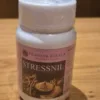Draksha
|
Botanical Name |
Vitis Vinifera |
|
Family |
Vitaceae |
|
Sanskrit |
Amrutapha, Caruphala, Dakha, Draksha,Kakali, Priyala, Rasala |
|
English |
Grape Vine, Raisin, Currant, Grape |
|
Hindi |
Dakh, Munnaka, Angur, Dak, Dakh |
|
Kannada |
Angura, Draksha, Dhrakshi |
|
Malayalam |
Gostani, Madhurasam, Mridvika, Muntirika |
|
Telugu |
Draksa, Draksha-Pondu |
|
Tamil |
Gostanidraksha, Kottani, Kotumuntiri |
|
Marathi |
Draksha, Draaksha, Kakanj |
Distribution
It is distributed in northern hemisphere, north western india, pennisula
|
Parts Used |
Fruit |
|
Dose |
Juice-20-40ml |
Chemical Constituents
Glucose, tartaric acid, potassium sulphate, albumin,tartaric acid
Ayurvedic Properties
|
Quality (Guna) |
Snigdha,Guru, Mrudhu |
|
Taste (Rasa) |
Madhura |
|
Metabolism (Vipaka) |
Madura |
|
Potency (Virya) |
Sheeta |
|
Impact (Prabhava) |
Snehopag |
Pharmacological Action
- Anti oxidative-helps to inhibit reactions promoted by oxygen
- Anti inflammatory- good in conditions due to inflammation
- Anti microbial-capable of destroying the growth of disease causing micro organisms
- Cardioprotective- supports cardiac functions
Therapeutic Uses
Mental disorders, urinary tract infection, vomiting
Some of the common formulations
- Abhyarista
- Aravindasava
- Aswagandha taila
- Chandanasava
- Drakshadi choorna
- Draksharista




